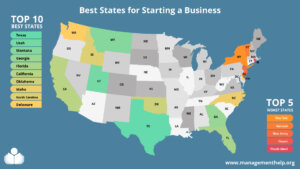© Copyright Carter McNamara, MBA, PhD, Authenticity Consulting, LLC.
Adapted from the Field Guide to Nonprofit Strategic Planning and Facilitation.
This activity is usually conducted near the overall process of strategic planning. Therefore, the reader might best be served to first read the information on the topic of Strategic Planning.
Sections of This Topic Include
Also, consider
Related Library Topics
Learn More in the Library’s Blogs Related to Writing and Communicating the
Strategic Plan
In addition to the articles on this current page, see the following blogs which have posts related to Writing and Communicating the Strategic Plan. Scan down the blog’s page to see various posts. Also, see the section “Recent Blog Posts” in the sidebar of the blog or click on “Next” near the bottom of a post in the blog.
- Library’s Business Planning Blog
- Library’s Building a Business Blog
- Library’s Leadership Blog
- Library’s Project Management Blog
- Library’s Strategic Planning Blog
- Library’s Supervision Blog
Writing the Strategic Plan
1. Have a small number of people write the first draft of the plan. An outside facilitator (someone hired from outside of the organization to facilitate the planning process) should not be the one who writes the plan.
2. Don’t worry about having every last detail in the first draft.
3. The draft should be presented to the board of directors (if applicable) and upper management for review and approval. It’s not unusual for the board and/or top management of large organizations to provide major input primarily to the contents in the body of the document, that is, the mission and vision and values statements, and the goals and strategies. Employees and other staff often provide the major input to the action planning portion, including the objectives, responsibilities, and timelines for the completion of objectives.
Formatting of the Strategic Plan
Note that it’s wise to distribute copies of the plan to major stakeholders (investors/funders, trade associations, etc.). Therefore, you should organize the format of the plan such that the body of the plan can be sent outside of the organization and the appendices can include the more confidential and detail-oriented documents — documents which also tend to change a lot. The format of the plan should fit the culture and preferences of the organization.
Consider the Following Sections
(The following sections might be viewed as the “body” of the plan document.)
1) Executive Summary — This is written to the scope and level of content so that an “outsider” can read the summary and grasp the mission of the organization, its overall major issues and goals, and key strategies to reach the goals
2) Authorization — This page includes all of the necessary signatures from the board of directors (if applicable) and other top management designating that they approve the contents of, and support the implementation of, the plan
3) Organizational Description — This section describes, for example, the beginnings and history of the organization, its major products and services, highlights and accomplishments during the history of the organization, etc.
4) Mission, Vision, and Values Statements — These statements describe the strategic “philosophy” of the organization
5) Goals and Strategies — Lists all of the major strategic goals and associated strategies identified during the strategic planning process.
Appendices
(The appendices often include information that is somewhat confidential, detail-oriented, and/or tends to change a lot.)
A) Action Planning — Specifies objectives, responsibilities, and timelines for the completion of objectives
B) Description of Strategic Planning Process Used — Describes the process used to develop the plan, who was involved, the number of meetings, any major lessons learned to improve planning the next time around, etc.
C) Strategic Analysis Data — Includes information generated during the external analysis (for example, environmental scan) and internal analysis (for example, SWOT analysis), and includes a listing of strategic issues identified during these analyses.
D) Goals for Board and Chief Executive Officer — Goals of the board and CEO should be directly aligned with goals identified during strategic planning. This appendix will list goals for the board and can include recommendations for redesigning board committees to be associated with strategic goals. The appendix also lists goals for the CEO goals — these can be used (along with the CEO job description) to form the basis for performance evaluations of the CEO.
E) Budget Planning — Depicts the resources and funding needed to obtain and use the resources needed to achieve the strategic goals. Budgets are often depicted for each year of the term of the strategic plan
F) Operating Plan — Describes the major goals and activities to be accomplished over the coming fiscal year.
G) Financial Reports — Includes last year’s budget (with estimated expenses and the actual amounts spent), this year’s current budget (again with estimated amounts and actual amounts spent), a balance sheet (or in the case of nonprofits, a statement of financial position), income statement (or in the case of nonprofit, a statement of financial activities), etc.
H) Monitoring and Evaluation of Plan — Include criteria for monitoring and evaluation, and the responsibilities and frequencies of monitoring the implementation of the plan
I) Communication of Plan — Describe the actions that will be taken to communicate the plan and/or portions of it, and to whom
Communicating the Strategic Plan
Note that certain groups of stakeholders might get complete copies of the plan, including appendices, while other groups (usually outside of the organization) might receive only the body of the plan without its appendices.
1. Every board member and member of management should get a copy of the plan.
2. Consider distributing all (or highlights from) the plan to everyone in the organization. It’s amazing how even the newest staff member gains quick context, appreciation, and meaning from a review of the strategic plan.
3. Post your mission vision and values statements on the walls of your main offices. Consider giving each employee a card with the statements (or highlights from them) on the card.
4. Publish portions of your plan in your regular newsletter, and advertising and marketing materials (brochures, ads, etc.).
5. Train board members and employees on portions of the plan during orientations.
6. Include portions of the plan in policies and procedures, including the employee manual.
7. Consider copies of the plan for major stakeholders, for example, funders/investors, trade associations, potential collaborators, vendors/suppliers, etc.
Also, consider
General Recommendations for Improving Communications
Return to the topic of Strategic Planning.
For the Category of Strategic Planning:
To round out your knowledge of this Library topic, you may want to review some related topics, available from the link below. Each of the related topics includes free, online resources.
Also, scan the Recommended Books listed below. They have been selected for their relevance and highly practical nature.
 Sections of this topic
Sections of this topic
















